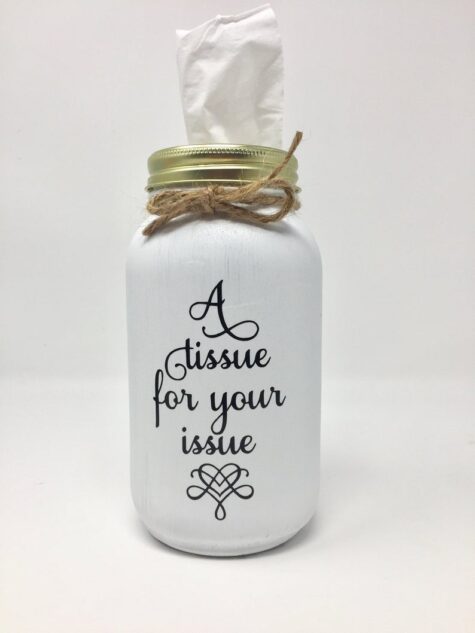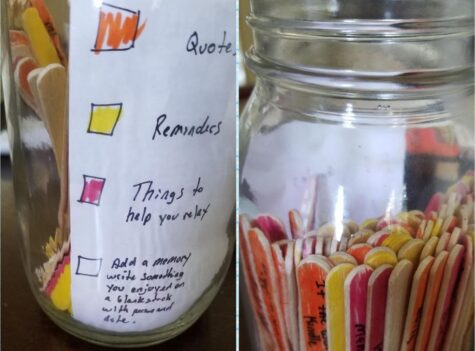Feelings
Something To Consider

“The truth is that there is no such thing as a negative emotion. Emotions only become “bad” and have a negative effect on us when they are suppressed, denied, or unexpressed. Positive thinking is really just another form of denial.”
— Colin Tipping
Be Good To Yourself Therapy
I found a cute little book in my personal library. It’s called Be Good To Yourself Therapy. It is a very simple short little book that details 37 rules for coping from day to day. There is some really good stuff here. Enjoy!
- 1. Trust yourself. You know what you want and need.
- 2. Put yourself first. You can’t be anything for anybody else unless you take care of yourself.
- 3. Let your feelings be known. They are important.
- 4. Express your opinions. It’s good to hear yourself talk.
- 5. Value your thinking. You do it well.
- 6. Take the time and space you need – even if other people are wanting something from you.
- 7. When you need something, don’t talk yourself out of it. Even if you can’t have it, it’s OK to need.
- 8. When you’re scared, let someone know. Isolating yourself when you’re scared makes it worse.
- 9. When you feel like running away, let yourself feel the scare. Think about what you fear will happen and decide what you need to do.
- 10. When you’re angry, let yourself feel the anger. Decide what you want to do; just feel it, express it, or take some action.
- 11. When you’re sad, think about what would be comforting.
- 12. When you’re hurt, tell the person who hurt you. Keeping it inside makes it grow.
- 13. When you see someone else’s hurt face, breathe. You are not responsible for making other people happy.
- 14. When you have work to do and you don’t want to do it, decide what really needs to be done and what can wait.
- 15. When you want something from someone else, ask. You’ll be OK if they say no. Asking is being true to yourself.
- 16. When you need help, ask. Trust people to say no if they don’t want to give.
- 17. When people turn you down, it usually has to do with them and not with you. Ask someone else for what you need.
- 18. When you feel alone, know there are people who want to be with you. Fantasize what it would be like to be with each of them. Decide if you want to make that happen.
- 19. When you feel anxious, let yourself know that in your head you’ve moved into the future to something scary and your body has gotten up the energy for it. Come back to the present.
- 20. When you want to say something loving to someone, go ahead. Expressing your feelings is not a commitment.
- 21. When someone yells at you, physically support yourself by relaxing into your chair or putting your feet firmly on the floor. Remember to breathe. Think about the message they are trying to get across to you.
- 22. When you’re harassing yourself, stop. You do it when you need something. Figure out what you need and get it.
- 23. When everything seems wrong, you are overwhelmed and need some comforting. Ask for it. Afterwards, you can think about what you need to do.
- 24. When you want to talk to someone new and are scared, breathe. Don’t start rehearsing, just plunge in. If it doesn’t go well, you can stop.
- 25. If you’re doing something you don’t like to do (such as smoking or overeating), stop. Think about what you really want. If you’re stuck and can’t think clearly, talk out loud to someone.
- 26. When you can’t think straight, stop thinking. Feel.
- 27. When you’re in need of love, reach out. There are people who love you.
- 28. When you’re confused, it’s usually because you think you should do one thing and you want to do another. Dialogue with yourself out loud or on paper, or present both sides to a friend.
- 29. When you feel harried, slow down. Deliberately slow your breathing, your speech, and your movements.
- 30. When you have tears, cry.
- 31. When you feel like crying and it’s not a safe place to cry, acknowledge your pain and promise yourself a good cry later. Keep your promise.
- 32. When somebody does you wrong, be actively angry with them.
- 33. When everything seems gray, look for color.
- 34. When you feel like a baby, take care of the baby in you.
- 35. When somebody gives you a gift, say “thank you.” That’s all you need to do. A gift is not an obligation.
- 36. When somebody loves you, just accept and be glad. Love is not an obligation. You don’t have to do anything in return.
- 37. If one of these rules seems wrong for you, talk about it with someone. Then, rewrite it so it fits for you.
Source: Be Good To Yourself Therapy by Cherry Hartman
Shame
It occurred to me that no conversation about imperfection and failure is complete until we address that one thing that most of us will go to great lengths to avoid. Shame.
Here are some thoughts about shame by Brené Brown that can be found in her book: The Gifts of Imperfection: Let Go of Who You Think You’re Supposed to Be and Embrace Who You Are.
What is shame?
Shame is that warm feeling that washes over us, making us feel small, flawed, and never good enough.
Here are the first three things that you need to know about shame:
- We all have it. Shame is universal and one of the most primitive human emotions that we experience. The only people who don’t experience shame lack the capacity for empathy and human connection.
- We’re all afraid to talk about shame.
- The less we talk about shame, the more control it has over our lives.”
People often want to believe that shame is reserved for the folks who have survived terrible traumas, but this is not true. Shame is something we all experience. And while it feels as if shame hides in our darkest corners, it actually tends to lurk in all of the familiar places, including appearance and body image, family, parenting, money and work, health, addiction, sex, aging, and religion. To feel shame is to be human.
We’re all capable of developing shame resilience. Shame resilience is the ability to recognize shame, to move through it constructively while maintaining worthiness and authenticity, and to ultimately develop more courage, compassion, and connection as a result of our experience. The first thing we need to understand about shame resilience is that the less we talk about shame, the more we have it.
Shame needs three things to grow out of control in our lives: secrecy, silence, and judgment. When something shaming happens and we keep it locked up, it festers and grows. It consumes us. We need to share our experience. Shame happens between people, and it heals between people. If we can find someone who has earned the right to hear our story, we need to tell it. Shame loses power when it is spoken.
She goes on to say:
After a decade of research, I found that men and women with high levels of shame resilience share
these four elements:
- They understand shame and recognize what messages and expectations trigger shame for them.
- They practice critical awareness by reality-checking the messages and expectations that tell us that being imperfect means being inadequate.
- They reach out and share their stories with people they trust.
- They speak shame—they use the word shame, they talk about how they’re feeling, and they ask for what they need.’
When we experience shame, we feel disconnected and desperate for worthiness. Full of shame or the fear of shame, we are more likely to engage in self-destructive behaviors and to attack or shame others. In fact, shame is related to violence, aggression, depression, addiction, eating disorders, and bullying.”
Here’s what she has to say about guilt and shame, and the differences between them:
Guilt = I did something bad.
Shame = I am bad.
Guilt is just as powerful as shame, but its effect is often positive while shame often is destructive. When we see people apologize, make amends, or replace negative behaviors with more positive ones, guilt is often the motivator, not shame. In fact, in my research, I found that shame corrodes the part of us that believes we can change and do better.
And then there’s this bit about perfectionism.
Where perfectionism exists, shame is always lurking. In fact, shame is the birthplace of perfectionism.
Shame is a daunting word. The problem is that when we don’t claim shame, it claims us. And one of the ways it sneaks into our lives is through perfectionism.
Perfectionism is not the same thing as striving to be your best. Perfectionism is not about healthy achievement and growth. Perfectionism is the belief that if we live perfect, look perfect, and act perfect, we can minimize or avoid the pain of blame, judgment, and shame. It’s a shield. Perfectionism is a twenty-ton shield that we lug around thinking it will protect us when, in fact, it’s the thing that’s really preventing us from taking flight.
Perfectionism is not self-improvement. Perfectionism is, at its core, about trying to earn approval and acceptance. Most perfectionists were raised being praised for achievement and performance (grades, manners, rule-following, people-pleasing, appearance, sports). Somewhere along the way, we adopt this dangerous and debilitating belief system: I am what I accomplish and how well I accomplish it. Please. Perform. Perfect. Healthy striving is self-focused—How can I improve? Perfectionism is other-focused—What will they think?
Research shows that perfectionism hampers success. In fact, it’s often the path to depression, anxiety, addiction, and life-paralysis.
Life-paralysis refers to all of the opportunities we miss because we’re too afraid to put anything out in the world that could be imperfect. It’s also all of the dreams that we don’t follow because of our deep fear of failing, making mistakes, and disappointing others. It’s terrifying to risk when you’re a perfectionist; your self-worth is on the line.’
Perfectionism is self-destructive simply because there is no such thing as perfect. Perfection is an unattainable goal. Additionally, perfectionism is more about perception—we want to be perceived as perfect. Again, this is unattainable—there is no way to control perception, regardless of how much time and energy we spend trying.
To overcome perfectionism, we need to be able to acknowledge our vulnerabilities to the universal experiences of shame, judgment, and blame; develop shame resilience; and practice self-compassion. When we become more loving and compassionate with ourselves and we begin to practice shame resilience, we can embrace our imperfections. It is in the process of embracing our imperfections that we find our truest gifts: courage, compassion, and connection.
Ideas To Lighten The Mood
When we explored Altschmerz, it occurred to me that I might really benefit from a specific time limit, or regularly scheduled space in my daily routine for either dealing with, or reliving the thoughts and feelings that put me in a funk, or ruin what might possibly have been a really nice day.
What I came up with is a number of fun little arts and crafts ideas that can be as basic and simple or as elaborate and complicated as you’d like them to be. It seems smart to start with simple and then embellish as time goes by, but I know myself pretty well, and I fully expect I’ll go full out elaborately complicated.
- Happy Memories
Ok, so here’s what I was thinking. Instead of torturing myself with the sad, bad, or otherwise unhappy moments in the past, I thought it might be fun and useful to spend a few minutes each day thinking about the best days, fun times, happy memories or experiences. And then, taking it one step further and writing it down.
Sylvia Hartman suggests a Star Memories journal, where you have a simple journal, and then just jot down your best memories, the date, your age, and anything else about that experience that you’d want to share. I like this idea.
It might also be fun to have a box. It doesn’t have to be an awesome and amazing box. Something as simple as a shoe box would work just fine. And then just jot down memories that cheer you up or make you smile and toss them in. Maybe pictures, mementos, little stuff could also go in. If you are cleaning house, or decluttering your car, and find a little something that makes you smile, it could go in the box too.
On the days when nothing is happy or fun, you could open the box and spend a little time reliving those little moments. And, on days when you feel up to it, you could spend some time adding to your memory box.. or decorating it.
What I really like about this idea is that at some point, when your time is up, and you have left this life – there will be a box of happy memories that your family and friends might find comfort in.
- Write About It
Some days, I need (or want) to just wallow in my “stuff.” And I am pretty sure that those are the days that the “Happy Memories” box will stay on the shelf, unopened.
For those days, I thought it might be helpful to simply acknowledge whatever it is that I’m in a funk about. I thought it might look like this:
I am ______ (pinpoint the feeling)
And I must really like feeling this way
Because if I didn’t, I would __________ (write the first thing that comes to mind)
And/or _________ (write the next thing that comes to mind)
So, it must be useful to me in some way
And I might as well spend the next ______ minutes enjoying it.
For me, today, it went like this:
I am feeling really tired and overwhelmed. I must really like feeling this way because if I didn’t, I would do something about it, and maybe get more sleep, go outside and get some fresh air, or even begin to implement a plan to cope with it. So, it must be useful to me in some way and I might as well spend the next 10 minutes enjoying it.
And I did spend about 10 minutes wallowing in the feeling, and then I actually got up and went outside and got some fresh air. Amazingly, it felt really good and helped a lot.
I didn’t want to forget this little exercise, and I thought it might be helpful if I had some little booklets all made up in advance. This video shows how to make little emoji booklets out of one sheet of paper with no glue… I’m going to make several when I finish with this post.
You will end up with 8 little pages. Some of the pages are doubled or even tripled, which bothered me a little bit, and I solved it by cutting the bottom edges of the bulkiest ones and then using scotch tape to bind up the middle parts where the booklet kind of separated.
My method gave me enough pages to do it like this:
- I am feeling:
- (leave blank to write on)
- I must really like
- Feeling like this
- Because
- If I didn’t
- I would:
- (leave blank to write on)
- and/or:
- (leave blank to write on)
- So it must be useful to me
- And I might as well
- Spend ______ minutes
- Enjoying it.
If you love your little booklets and want them to be really cute, you could use washi tape to secure the middles and around the sides. The double sided ones could even be left open at the top or on the side to give you a little pocket for… I dunno what… but something fun?
This has the added bonus of being wonderfully distracting! I love arts and crafts solutions to emotional issues. Plus you can take one or two of them with you in case you need to use it at work… when waiting for an appointment… or while visiting relatives.
- Blow It Off
Here’s another fun idea. It looks really really easy, and doesn’t require a lot of materials. Plus you have the added bonus of simply using a regular box of tissues and decorating it (if you want to). My vision for this is to pull out a tissue and blow your angst, anxiety, issues… whatever it is that’s bothering you… into it. Really get it all blown out of your head and into the tissue.
And then flush the tissue with a wave good-by and a squirt of room sanitizer, a spritzer of aromatherapy fragrance… whatever you have that you think will clear the room. Some days it might take several tissues to get it all out. Other days, you might not even need it.
There are a lot of tutorials online about how to make these. You can also buy them ready made on Etsy. Or you can keep it simple and just decorate a box of tissues.
If you want to make one out of a jar, it’s pretty easy:
Start with a mason jar, take the lid off and decorate the jar with paint, fabric, or whatever you like. The round middle part of the lid can be replaced with either felt or cardboard. Or even the top of the tissue box if the opening is small enough. Simply use the middle lid to cut the right size circle from the felt or cardboard. Make an opening to pull the tissues through. Decorate the top of the lid however you want, and voila!
Most of the tutorials call for a mason jar because the lid is easy to alter. You can use any wide mouth jar, even a plastic peanut butter jar, the only draw back is that the plastic lid will have to be cut for the tissues to pull through.
- Put It On A Stick
This is a cute and fun little all purpose idea that requires either popsicle sticks or strips of colored cardstock. When I was a kid, my parents had a little set of bible verses on strips of cardstock that they kept in a container on the dining room table. Every morning we would pick one and read it aloud, and that would be our spiritual theme for the day.
This idea is similar. What you would do is spend some time making the different bits for it. It can be approached as a work in progress. When you find yourself spiraling down the rabbit hole, you could pull this out and add to it. If you’re already too far gone, you can pull something out of your jar and maybe it will help.
This would also make for a great group project. Get everyone in the family involved on a lazy Sunday afternoon, or get together with friends and help each other think of stuff to write down.
I find that the simple process of making something like this acts as a huge mood booster. It’s wonderfully distracting, feels productive and useful, and if you give it something cute to live in, you can keep it out and have it ready for those times when you really might need it.
- Count Your Blessings
This can take any form. You can think about and list your good qualities and loveable attributes. You can list all the things that you have that make your life easier and more comfortable. You can use it as a gratitude journal, box, jar…
Alternatively, if this sort of thing works for you, you can fill your container or your book with affirmations, uplifting thoughts, and positive images.
I like the idea of using a bottle or a box over a journal simply because I have so many unfinished journals. However, I have been exploring Junk Journal making. It’s a really ambitious and complicated idea, but maybe i will make more than one. If I do, it might be fun to create a blessing / gratitude / positive thoughts journal. I’m really intrigued with the idea of a tiny one. Here’s a link to one of the tutorials that got me inspired.
Exploring Altschmerz
Today I thought we could explore Altschmerz. Altschmerz is a compound noun made from the words alt (old) and Schmerz (pain). It therefore translates to ‘old pain’. What does it mean?
Weariness with the same old issues that you’ve always had—the same boring flaws and anxieties you’ve been gnawing on for years, which leaves them soggy and tasteless and inert, with nothing interesting left to think about, nothing left to do but spit them out and wander off to the backyard, ready to dig up some fresher pain you might have buried long ago.
We’ve all done this. Some of us more than others. I am an expert in Altschmerz. What about you? How familiar are you with old pain? I’m sure we all experience this differently, for me, it generally takes the form of regret and self-recrimination. What about you?
We already know that What You Focus On Grows, so this can’t be a good place to spend our precious time.
Is there a solution?
If you search Google, you’ll find a plethora of “just do this, this, and this” articles mostly rehashing the same stuff over and over. Here are some of the better ones. Some of them focus on rumination, which is obsessive worrying and overthinking, which I think it fits in fairly well with Altschmerz.
- Establish a time limit!
If you find yourself in a funk, or in an obsessive worry, regret, or negativity loop, set a timer. Give yourself a set amount of time and really go for the gold. When the timer goes off. Get up. Wash your face. Get dressed. And do something completely different, change your environment, change the channel, change something.
I love this idea. I think I’m going to schedule some worry, guilt, anxiety, regret and general angst time. Make it a part of my daily routine. It will need to be sandwiched in between activities that require me to be functional and present, and/or my favorite fun distractions so that I can easily pull myself out if I get in too deep.
- Use it to make your life better.
Let’s imagine you received a considerable electricity bill a week ago. You paid the bill, but you suddenly start thinking about it, and you feel more and more upset and stressed. The first step to turn this into something meaningful is to notice what you’re doing. This can be as simple as, “I’ve just started having anxiety about the huge electricity bill.”
Identify the reasons why you’re worrying. For example, “I’m worrying over the electricity bill because I’m on a tight budget, I’m frustrated I have to spend so much money at once, and I’m disappointed because I should have been more careful about using electricity.”
Choose some meaningful changes you could make in your life. You might decide to take shorter showers and wear extra layers of clothing, rather than always turning on the heater. You might open the blinds earlier to make the most of the natural light, rather than turning artificial lights on. All of these changes can help reduce your electricity bill next time.
Take action. Once you have some action steps, do your best to follow through. Write down helpful reminders, set timers, find an accountability buddy — anything that will help you implement the meaningful changes you chose in the previous step.
By identifying helpful changes and implementing them into your life, you’ll train yourself to learn from past mistakes, rather than just “beating yourself up” about them.
- Practice mindfulness
Mindfulness is the practice of being present in the moment with an attitude of open-mindedness and curiosity.
For example, you might take a shower, and rather than thinking about the mistakes you’ve made over the last weeks, months, and years, you could practice mindfulness. You might feel the water falling onto your skin. When you close your eyes, you listen to the different sounds you can hear. You notice areas of warmth and coolness in your body. Whenever you catch your mind wandering to the past or future, you re-focus on the moment.
A study in 2019 found that participants who practiced mindfulness were less likely to experience depression. The study author said, “Ruminators tend to latch onto a negative emotion and repeatedly mull it over in their mind, whereas mindfulness teaches us not to become entangled with our negative emotions.”
Next time you notice yourself obsessing about old pain, try a mindfulness practice like mindful breathing or mindful listening.
- Cultivate your confidence.
Low self-esteem has been linked to increased rumination. When you regularly focus on the past and negative events, you might start to feel like you’re not good enough. You might see your mistakes more than your achievements. Rather than finding ways to learn and grow, you might become caught up in thoughts about what “should” have happened differently. Feelings of shame, disappointment, frustration, and unfairness might grow stronger. So it’s not a huge surprise that your self-esteem can take a hit.
However, if you focus on cultivating your confidence, you might reduce your tendency to focus on the negatives. At the end of each day, write down a list of things you’ve done well. Know and pay attention to your best qualities. Smile at yourself often. Before you leave the house in the mornings, tell yourself how awesome you are. Because you are awesome! This is actually true.
- Talk about your thoughts.
Sometimes, an effective way to release persistent or upsetting thoughts is to talk about them. Go out for coffee with a supportive friend or family member and tell them what’s been on your mind. Invite your fears or failures into the open, where they often become less distressing.
If you don’t feel comfortable talking about persistent or upsetting thoughts with the people close to you, perhaps you’d prefer talking a licensed mental health professional. And if that’s not an option, tell your dog, your cat, or even the moon. Sometimes speaking those thoughts aloud allows them to be released.
- Use distractions.
Interrupt persistent thoughts about the past by engaging in useful distractions. Listen to a playlist of your favorite uplifting songs. Call a friend and ask them about their day. Go for a run. Declutter and tidy your home. Do something creative, like mindful coloring, gardening, or playing music.
Try to avoid mindless distractions that don’t add value to your life, and find constructive distractions that boost your emotional, physical, or social wellbeing.
Feeling Good
Today I thought we could explore all the things that if feels good to think about. Of course this will be different for everyone. Possibly it will be helpful to make a list and post it somewhere as a reminder. To help us get started, I’ve put together a collection of feel good happy stuff that I enjoy thinking about. Enjoy!
Playing in the rain… so much fun!
Simple creative projects… I love to think about them!
Oooh! Yummy food!
Fun times with family and friends.
If I was an alien… one of my favorite mind games.
Interesting factoids… very mentally entertaining
A road trip… always something fun to think about.
I love to think about books I’m reading, have read, or plan to read.
Funny memes… a great mental distraction.

Fur babies are a great source for happy thoughts.
Home sweet home is always a nice thought.
Fulfillment is in the Joy Before Manifestation
Fulfillment is in the joy of possession is the message of this video. Here’s an excerpt from the talk:
Sometimes we approach life in such a way that we feel that we need this or that thing in order to feel good. And yes it is a truth that sometimes we receive certain things and we feel a greater measure of joy as a result of that thing. And yet the way in which things are really meant to happen, is we’re meant to feel the joy at first, even before we have the possession. Feeling is the first stage of reality, and feeling is even the greater measure of reality….
I did not transcribe the entire talk, so we’ll have to listen to the video to get the rest of the story.
Audio Only
For those of us who prefer to simply listen, here is an audio only version of the video:
Links:
- His website: Astarius.com
- YouTube channel: Astarius Miraculii
- Facebook page: Astarius Miraculii
Emotional Wealth
“Emotional Wealth is the Energetic Frequency behind all material abundance. The frequency of Emotional Wealth is expanded through gratitude, faith and immaculate visioning which then gives birth to Material Abundance. Cause Creates Effect”!
I did not transcribe this video, so we’ll have to watch it if we want to hear what he has to say about emotional wealth and how it relates to abundance and prosperity. He speaks a little bit about femifestation which is an interesting concept and variation on the word manifestation.
Audio Only:
Links:
- His website: Astarius.com
- YouTube channel: Astarius Miraculii
- Facebook page: Astarius Miraculii
- Radical Self Care Project Overview by shirleytwofeathers - No Comment
- Radical Self Care Image Gallery by shirleytwofeathers - No Comment
- It’s A Wrap by shirleytwofeathers - 3 Comments
- Something To Consider by shirleytwofeathers - 1 Comment
- Nurturing Your Precious Self by shirleytwofeathers - 3 Comments
me: Make Your Own Violet Fire
Abdulrahman: Money Chant – Very Fast
Shirley Twofeathers: It’s A Wrap
Daniel Knirs: It’s A Wrap
Shirley Twofeathers: It’s A Wrap

























